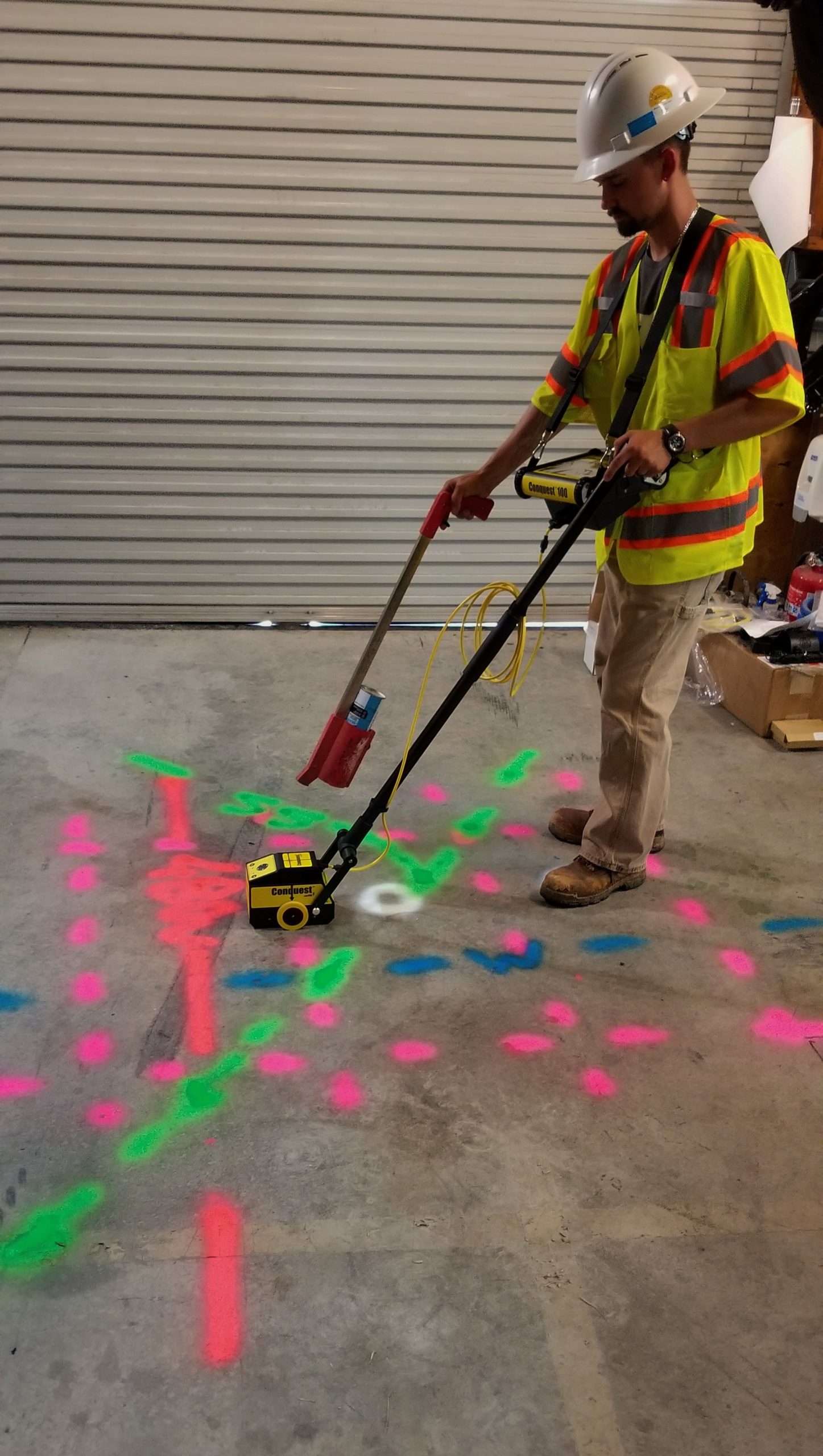GPR Concrete Scanning Bellevue: Precision and Accuracy
Concrete Scanning: Your Guard Versus Unforeseen Obstacles in Building And Construction Projects
In the realm of construction, unforeseen challenges can frequently disrupt timelines, budgets, and safety protocols. However, with the evolution of concrete scanning modern technologies, the capacity to prepare for and alleviate prospective challenges has become an essential aspect of task preparation and execution. By utilizing the power of advanced scanning methods, building and construction specialists can proactively determine covert hazards beneath the surface area, guaranteeing a smoother and much more efficient task shipment. As we explore the significance of concrete scanning as a safety shield versus unanticipated obstacles in building and construction tasks, a deeper understanding of its advantages and applications arises, dropping light on the transformative impact it can carry the market as a whole.
Importance of Concrete Scanning
Concrete scanning plays an important duty in ensuring the safety and security and integrity of building projects. By making use of advanced innovations such as ground-penetrating radar (GPR) and electro-magnetic induction, building groups can properly locate rebar, post-tension wires, channels, and other prospective obstructions within concrete frameworks. This process is important for protecting against expensive problems, making sure architectural stability, and preserving task timelines.
One of the key reasons concrete scanning is so essential is its capacity to alleviate threats throughout the building stage. By recognizing hidden threats below the surface area, such as spaces or deteriorated areas within the concrete, professionals can proactively deal with these problems prior to they intensify right into even more significant issues. This proactive method not just improves worker safety and security yet additionally decreases the likelihood of construction delays and spending plan overruns.
Moreover, concrete scanning enables construction groups to make enlightened choices based upon exact information. By having a clear understanding of the subsurface conditions, project supervisors can intend excavation, boring, or cutting tasks better, lowering the capacity for unintentional damage to critical architectural components. Eventually, purchasing concrete scanning solutions is a positive measure that can conserve building companies time, cash, and track record over time.
Advanced Technologies for Discovery

One more ingenious innovation is Electromagnetic Induction (EMI), which identifies metal and non-metallic things below ground by generating electro-magnetic fields. EMI is especially beneficial for situating hidden energies like pipes and cables - GPR Concrete Scanning Bellevue. Furthermore, Acoustic Pulse Echo (APE) modern technology makes use of acoustic waves to assess the problem of concrete structures and detect gaps, fractures, or delaminations. APE gives real-time information, enabling immediate decision-making on repair service or reinforcement requirements.
Furthermore, innovations in infrared thermography have actually enabled the discovery of dampness infiltration and insulation spaces within concrete frameworks. This modern technology aids in protecting against future wear and tear and making sure the longevity of buildings. By integrating these innovative technologies into concrete scanning methods, building and construction projects can reduce dangers and enhance total project outcomes.
Advantages of Proactive Scanning
Carrying out positive scanning techniques in building and construction tasks improves the early discovery of prospective subsurface obstacles, leading to boosted job look what i found effectiveness and cost financial savings. By using concrete scanning technologies such as ground-penetrating radar (GPR) and electro-magnetic induction, building teams can recognize concealed risks before they rise into pricey problems.
In addition, positive scanning enhances security on-site by decreasing the threat of unintentional damage to below ground facilities or threats. By determining potential challenges early on, building crews can take preventative steps to minimize threats and guarantee a safer working setting for find out all involved. In addition, by dealing with subsurface obstacles proactively, project timelines are most likely to remain on track, preventing pricey hold-ups and revamp. Overall, the aggressive approach to concrete scanning not only conserves time and money yet also enhances the total quality and success of building and construction projects.
Enhancing Project Efficiency
To maximize building and construction task end results, the positive scanning techniques employed not only boost safety and security however likewise play a critical duty in enhancing general project performance. By performing complete concrete scanning prior to commencing any building and construction tasks, potential obstacles and threats underneath the surface can be identified and minimized beforehand. This positive method minimizes the chance of expensive delays, revamp, and mishaps, thus enhancing the job timeline and budget.
By preemptively dealing with any type of below ground intricacies, the building and construction process can proceed smoothly, with less disturbances and unpredicted challenges. Ultimately, the combination of concrete scanning right into building tasks not just ensures security and compliance yet additionally boosts productivity and job performance.
Ensuring Safety And Security On-Site
Security on construction sites is paramount to the success of any project. One of the vital facets of advertising safety is offering adequate training to all workers entailed in the job.
Carrying out clear interaction channels for reporting safety and security concerns is essential for creating a secure job atmosphere. Motivating a safety-first culture where workers feel encouraged to speak out regarding potential risks can aid protect against mishaps before they happen. In addition, giving individual safety devices (PPE) and implementing its use is crucial in guarding workers from harm.
Conclusion

By including these sophisticated technologies into concrete scanning techniques, building jobs can reduce risks and boost overall project end results.

In verdict, concrete scanning plays a critical duty in building and construction jobs by finding unanticipated challenges that could possibly impede development and compromise security on-site. GPR Concrete Scanning Bellevue.